All Images
News Release 11-025
The Most Genes in an Animal? Tiny Crustacean Holds the Record
New "model organism" to help environmental health protection
This material is available primarily for archival purposes. Telephone numbers or other contact information may be out of date; please see current contact information at media contacts.
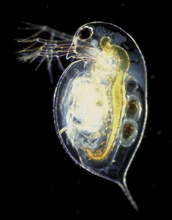
The tiny water flea Daphnia has the most genes of any animal, some 31,000.
Credit: Paul Hebert, University of Guelph
Download the high-resolution JPG version of the image. (218 KB)
Use your mouse to right-click (Mac users may need to Ctrl-click) the link above and choose the option that will save the file or target to your computer.
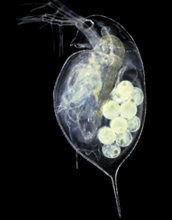
Daphnia, or water flea, with a clonal brood of offspring.
Credit: Paul Hebert, University of Guelph
Download the high-resolution JPG version of the image. (279 KB)
Use your mouse to right-click (Mac users may need to Ctrl-click) the link above and choose the option that will save the file or target to your computer.
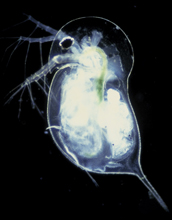
A defensive helmet helps protect Daphnia against predators.
Credit: Paul Hebert, University of Guelph
Download the high-resolution JPG version of the image. (261 KB)
Use your mouse to right-click (Mac users may need to Ctrl-click) the link above and choose the option that will save the file or target to your computer.
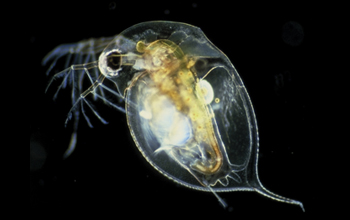
Daphnia with mild defensive neckteeth; the teeth are used against predators.
Credit: Paul Hebert, University of Guelph
Download the high-resolution JPG version of the image. (320 KB)
Use your mouse to right-click (Mac users may need to Ctrl-click) the link above and choose the option that will save the file or target to your computer.
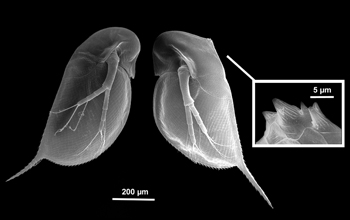
Juvenile Daphnia with and without defensive neckteeth.
Credit: Christian Laforsch, Ludwig-Maximilians-Universitat, Munich
Download the high-resolution JPG version of the image. (476 KB)
Use your mouse to right-click (Mac users may need to Ctrl-click) the link above and choose the option that will save the file or target to your computer.
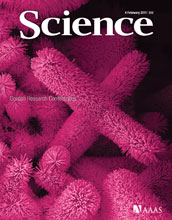
The researchers' findings are described in the February 4, 2011 issue of the journal Science.
Credit: Copyright AAAS 2011
Download the high-resolution JPG version of the image. (1.2 MB)
Use your mouse to right-click (Mac users may need to Ctrl-click) the link above and choose the option that will save the file or target to your computer.


